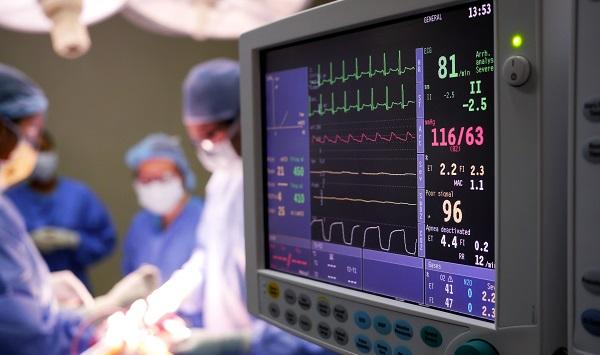No Benefit of LAA Ligation During HeartMate 3 Implantation: MOMENTUM 3
A subset of AF patients receiving their LVAD for destination therapy might still benefit, however, Akinobu Itoh says.

Surgically ligating the left atrial appendage (LAA) during implantation of the HeartMate 3 left ventricular assist device (LVAD; Abbott) does not affect survival or hemocompatibility-related adverse event rates at 2 years, regardless of a patient’s atrial fibrillation (AF) status, according to new data from MOMENTUM 3.
Original study results—which showed a lower rate of reoperation for pump malfunction at 2 years with HeartMate 3 compared with its predecessor, the HeartMate 2—led to the US Food and Drug Administration’s eventual approval of the device as destination therapy for patients with advanced heart failure ineligible for heart transplantation.
But, according to Akinobu Itoh, MD, PhD (Brigham and Women’s Hospital, Boston, MA), who presented the new results Sunday at the Heart Failure Society of America 2022 meeting in Washington, DC, operators have been concerned about device-related thrombus in some patients, especially those with stroke, thrombotic events, or GI or nasopharyngeal bleeding.
“In order to improve that, there were some other things we could do, and left atrial appendage ligation is one of those by eliminating the little orifice on the side of the left atrium, which could be a source for the emboli to come to the system, especially in patients with atrial fibrillation,” he told TCTMD.
According to their data, which included 515 patients from the original MOMENTUM 3 pivotal trial and 1,685 from the continued access protocol (CAP), LAA ligation was done in only 8.7% of patients at the discretion of their surgeon. For this analysis, the researchers included the 150 patients who had no other concurrent procedures performed.
The addition of the LAA procedure did not increase implant duration, bypass time, or ICU or hospital length of stay. It also did not affect the 2-year rates of stroke-free survival (79.5% vs 76.6%) or any survival (83.3% vs 81.7%) overall or within the population of patients who had a history of AF (81.0% vs 72.9%; 83.7% vs 76.6%; P < 0.2 for all). There were also no differences in the rates of any hemocompatibility-related adverse events between those who did versus did not undergo LAA occlusion in all patients (40.7% vs 41.9%; P = 0.77) and in those with AF (40.0% vs 43.6%; P = 0.56).
Lastly, neither LAA occlusion nor history of AF were deemed to be independent predictors of increased hemocompatibility burden in patients, but age (HR 1.21 per 10-year increase; 95% CI 1.19-2.01), female sex (HR 1.55; 95% CI 1.19-2.01), and having an ischemic etiology of HF (HR 1.44; 95% CI 1.14-1.80) were.
Even though the study did not show a benefit with LAA occlusion, Itoh said he still thinks a “subset” of patients with AF might have improved outcomes from this additional step, which can be performed in a variety of ways, including a traditional surgical removal and oversewing technique, a “$400-$500” staple, a $20 loop suture that adds “about a minute,” or a $2,000 clip that takes “maybe 20 or 30 seconds.” All four methods were used in this study at the surgeon’s discretion.
Itoh plans to continue performing LAA occlusion—he prefers using two loop sutures for an “economical” and “efficient” result—for those with AF who are receiving their LVAD as destination therapy.
“For those patients who don't have atrial fibrillation, the answer is clear: we don't have to do it,” he added. “For patients with atrial fibrillation, there may still be a potential [benefit], but if that prolongs the surgical time or heart bypass time, we should not do it.”
Surgeons tend to do what he or she wants to do, and that's obviously something we can do. Akinobu Itoh
Even though the main study results go out to 5 years, Itoh acknowledged that CAP patients were only followed through 2 years. While it’s possible there might be additional differences in outcomes beyond 2 years, Itoh said they would be “subtle,” if anything. “I do believe if we had any significant difference, we would have seen that already with this patient population,” he said. “This amount of data is good enough to say, ‘Ok, if you don't want to spend any extra time or money or just simplify the surgery, it didn't really show any benefit, [and] we don't really have to do it.”
Instead, he’d like to see future research focus solely on the AF population to help better determine which specific patients would benefit from LAA closure, even if it’s done percutaneously as a second procedure following their surgery. “If we suspect that patients may have any of the bleeding issues, then it would be beneficial to go back in [with a transcatheter version of] this type of ligature treatment,” Itoh said. “It could provide a better outcome for that patient population.”
At the end of the day, whether to perform LAA occlusion during these procedures will remain a balance between “science and [a] surgeon’s ego,” and the answer is “very clear” which is more important.
“Surgeons tend to do what he or she wants to do, and that's obviously something we can do. Unless there's any adverse outcome by doing that, then I would say why not?” Itoh said. “Also, cost is a very important aspect of our surgery, so if those things can be justified, then one might say why don't we just do it? However, we just have to be strict with the science. The science doesn't really support you.
Yael L. Maxwell is Senior Medical Journalist for TCTMD and Section Editor of TCTMD's Fellows Forum. She served as the inaugural…
Read Full BioSources
Itoh A. Usefulness of left atrial appendage occlusion during left ventricular assist device implantation: an outcomes analysis from the MOMENTUM 3 randomized clinical trial. Presented at: HFSA 2022. October 2, 2022. Washington, DC.
Disclosures
- The MOMENTUM 3 trial was sponsored by Abbott.
- Itoh reports no relevant conflicts of interest.





Comments